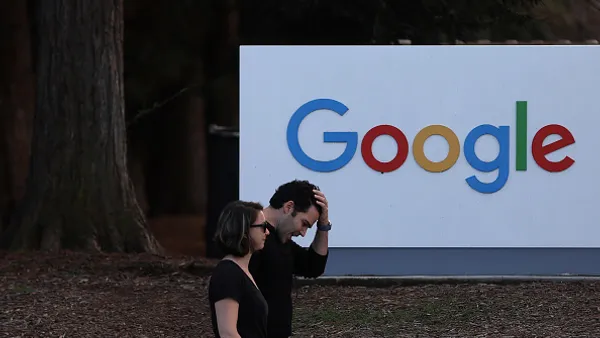Dive Brief:
- The Association of National Advertisers (ANA) and Digital Content Next have teamed up to support TrustX, a non-profit subsidiary of digital content trade group DCN, and programmatic marketplace with a mission to restore trust, transparency, and economic value to the programmatic digital advertising supply chain, per a press release made available to Marketing Dive.
- The TrustX marketplace offers advertisers a number of benefits including: a guarantee to only pay for transactions certified as human, viewable and in a brand-safe environment; total supply-side transparency; an ad tech tax scorecard with end-to-end digital supply chain costs; and a new industry benchmark for programmatic media buying power that provides advertisers with the ability to maximize returns on digital advertising investments, according to ANA CEO Bob Liodice in the press release.
- Participation in the program requires advertisers to allocate part of their programmatic spending through TrustX to its 30 premium publishers including CBS Interactive, Viacom, A&E Networks, ABC, Condé Nast, Hearst, NBCUniversal, ESPN, News Corp., The Washington Post, Meredith and Vox Media among others.
Dive Insight:
The ANA partnership with Digital Content Next around the TrustX marketplace looks to be a move to try to solve some of the issues with programmatic that have come into clearer focus in 2017, largely by bringing more transparency to the process. The ANA is an important force in the advertising space and could be well-positioned to drive meaningful progress in programmatic is the program gains a big enough buy in. One issue for brands in joining is likely to be the requirement to allocate part of their buy to a specific list of pubilshers.
Transparency has been a big issue across the digital media supply chain this year, with the ANA's announcement joining a series of moves by individual digital platforms, measurement firms and brands to pull back the cover on what exactly marketers' ad investments are paying for and what the results are.
Marketers tend to be of two minds when it comes to programmatic advertising. On the one hand, it is convenient because of its automated nature. However, on the other hand, the media chain for programmatic is murky and the automated process removes a lot of control from the marketer over where their ads actually appear. Some have even argued that it is eroding context from the ad buy.
Despite these challenges, programmatic buying continues to grow even as some brands have stepped back their investment with little negative impact on results. Programmatic advertising is predicted to grow 31% in 2017, faster than any other digital media channels. Calling into question the effectiveness of programmatic, JPMorgan Chase recently significantly reduced the number of websites serving its ads programmatically with little change in the cost of impressions or visibility.
In May, the ANA, along with the Association of Canadian Advertisers (ACA), Ebiquity and AD/FIN, released a study that found marketers are having a hard time understanding and adjusting to the programmatic media buying supply chain which has led to a lack of transparency. Some of the issues the report uncovered were the widespread use of non-disclosed programmatic buying arrangements between marketers and agencies, knowledge gaps about how the programmatic ecosystem works and a lack of industry standards and protocols that would allow marketers to analyze programmatic investment costs and effectiveness compared to marketplace norms and benchmarks.













